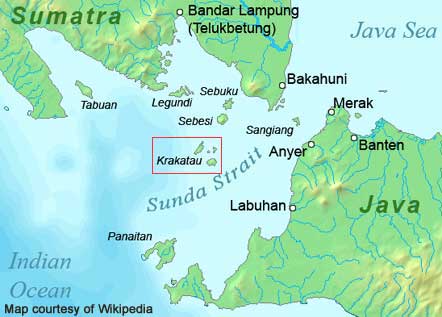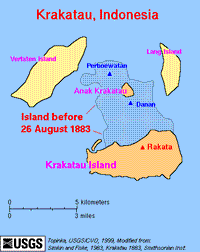
|
Lobby > Exhibits > Why Geysers Erupt > Underlying Geology > Volcano Comparisons Volcano ComparisonsOne of the largest volcanic eruptions in recorded history was that of Krakatau in 1883. Two-thirds of the island of Krakatau was destroyed and atmospheric shock waves reverberated around the world seven times. Gigantic pyroclastic flows entered the sea, creating tsunamis.  Worldwide effects of this eruption
1. At least 36,417 people were killed and many thousands were injured.
Also, 165 towns were destroyed and there was serious damage to 132
more communities. If you compare the relatively small size of Krakatau’s 1883 eruption with that of the caldera-forming eruptions at Yellowstone, you can gain some appreciation of how large and devastating the Yellowstone eruptions might have been. Next | 1 > 2 | Next Section: Another Eruption? |
|
||||||||||||||||||||||||||||||||||


